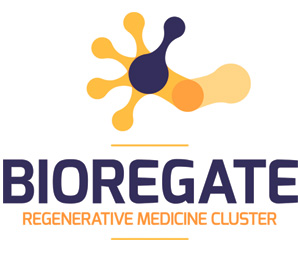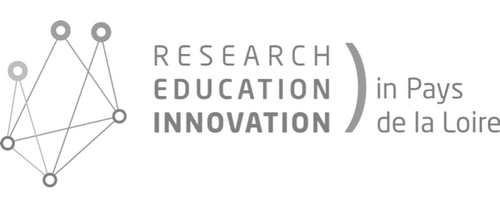Organization activities
The Gene Therapy Laboratory was created in June 1996, and the vector core was set up in 1997.
The vector core facility started to provide the scientific community with viral vectors derived from adenovirus, lentivirus and adeno-associated virus. The idea was to make easier and to accelerate research work in the field of viral vectors-mediated gene transfer. The Core is funded by Association Française contre les Myopathies (AFM), Institut National de la Santé et de la Recherche Médicale (INSERM) and the University Hospital (CHU) of Nantes.
Today our laboratory is a joint research unit, INSERM UMR1089, organized in three groups among which
- A Research group, which develops in vivo gene transfer protocols for retina and neuromuscular diseases (e.g. spinal amyotrophy and Duchenne muscular distrophy). In each model disease, our focus is to evaluate the efficiency of gene transfer according to the administration rout, to study the possible associated immune response, and to examine the molecular fate of the vector following administration.
- A Development group, which develops innovative tools for AAV vectors production, production and purification processes for manufacturing of clinical-grade vectors, and assays for quality control of pre-clinical and clinical vector lots. Our aim is to transfer these developments to our cGMP facility (Atlantic Bio GMP) or to our collaborators at Genethon.
Researh activities of the LTG lab
Gene Therapy for Retinal Diseases
Inherited retinal degenerations constitute a large and heterogeneous group of untreatable blinding conditions affecting 1 in 2000 people worldwide. They are caused by mutations in one of more than 200 genes mainly expressed in photoreceptor cells, as well as in the retinal pigment epithelium. Retinitis Pigmentosa (RP) and Stargardt disease (STGD1) are amongst the most frequent and severe forms of such retinal degenerative diseases.
The identification over the last three decades of genes implicated in retinal degeneration has laid the ground for the development of gene therapies to treat these types of diseases. Vectors derived from adeno-associated viruses (AAVs) are the ones of choice for retinal gene therapy due to their ability to efficiently target the different retinal layers.
Furthermore, AAV vectors are safe, of low immunogenicity and enable long-term expression of the therapeutic gene following a single administration in patients. Indeed, the results of landmark phase I/II clinical trials of AAV-mediated gene therapy for type 2 Leber congenital amaurosis (a form of RP) constitute the first report of safe and effective gene addition in humans with severe degenerative diseases.
In its 15 years of existence, the Gene Therapy for Retinal Diseases team has accumulated a wealth of experience in translational research into gene therapies for inherited retinal dystrophies. Notably, the retina group has provided preclinical proof-of-concept for retinal gene therapy in canine models of RPE65 deficiency and of a rod-cone (PDE6ß-/-) and a cone-rod (RPGRIP1-/-) dystrophies. Importantly, the retina group in collaboration with the Ophtalmology department at the University Hospital in Nantes is the first in the world to develop an AAV4 vector for clinical trials and to successfully perform a Phase I/II trial for type 2 Leber congenital amaurosis with this vector (manuscript on preparation).
The group is currently focusing on the investigation of multiple approaches for the development of novel retinal gene therapies to treat retinitis pigmentosa and Stargardt disease, and on the generation of new animal models that more faithfully mimic the human condition in order to investigate disease mechanims and test the efficacy of potential gene therapies.
Gene therapy for neuromuscular diseases
Duchenne Muscular Dystrophy (DMD) is the most common neuromuscular disease in children, affecting approximately one in every 3,500 to 5000 male births. It is caused by mutations in the gene for dystrophin, which corresponds to a protein that has an extremely important role in muscle fiber integrity and function. It is characterized by general, progressive, irreversible and severe loss of muscle function. By about the age of 10 to 13, sufferers become unable to walk and, by the time they reach adolescence, they require respiratory assistance. Survival can also be threatened by heart muscle involvement. To date, no effective treatment has yet been established.
Among the possible therapeutic approaches, exon skipping is a particularly promising. The goal of this approach is to delete the part of the gene carrying the mutation, and then to allow the production of a shorter but functional dystrophin protein (quasi-dystrophin). Exon skipping can be performed by carrying in the cell a small DNA molecule, specific for the sequence to delete in the dystrophin gene. This small DNA sequence can be transferred in the muscles of the patient with a recombinant Adeno-Associated Virus (rAAV) carrying a small transgene called “U7”.
Since late 2009, our lab is engaged in the AFM network called “DMD/U7”, in collaboration with Généthon (Evry), the Institute of Myology (Paris) and other teams of Atlantic Gene Therapies (INRA UMR 703 and ONIRIS) in Nantes. The aim of this large network of near than 100 experts from all disciplines is to begin a clinical trial in DMD patients. The goal will be to treat entire limb by locoregional injections of AAV-U7.
Between 2010 and 2012, the efficacy of our therapeutic product has been demonstrated in a large animal model of DMD (the GRMD dog) and the therapeutic dose has been determined. The years 2013 and 2014 were devoted to regulatory toxicology studies (demonstration of the safety of the treatment). We now plan to submit our clinical trial application to regulatory agencies in 2015.
In parallel to the “exon skipping” approach, we are also evaluating another therapeutic protocol based on the use of a rAAV vector allowing the transfer of a “micro-dystrophin” gene into muscle cells. This product would in theory allow the treatment of all DMD patients whatever the nature of their genetic defect. The biosafety and the efficacy of this treatment were recently demonstrated in the GRMD dog after locoregional injection in one forelimb. The next step is to apply this treatment to the entire body after systemic injection, in order to cure all muscles of the body but also the heart and diaphragm.
Within these collaborative projects, our team is in charge of coordinating all preclinical experiments and of studying the pharmacology of the vector (shedding, biodistribution, expression) after injection into an organism.
Immunology of gene transfer with AAV vectors
The injection of rAAV in rodent, big animal models and more recently in man, revealed cellular and/or humoral immune responses against the transgene and/or the viral capsid.
These responses are variable, depending on multiple parameters such as rAAVr serotype, dose, production modalities and administration route, the transgene and its promotor controlling its expression but also the animal species, preexisting immunity against AAV, pathological status of the targeted tissue.
These immune responses can cause the inefficiency of the gene transfer. Controlling this immunotoxicity is a major challenge for the success of future gene therapy clinical trials.
In this context, the team ”Immunology of gene tranfer with AAV” aims at:
- Immunomonitoring big animals that undergo gene therapy with skeletal muscle or CNS injection. The protocol includes serological screening before injection such as the AAV neutralization test, and the follow up of the cellular and/or humoral immune responses against both the transgene and the vector after injection. Routinely, ELISA techniques are used to screen antibodies and ELISpot techniques for the identification of specific T cells.
- The team is also involved in a vast translationnal research program to study the immune impact of the vectors administration route in non-human primate. The framework includes loco regional, systemic injections as alternatives of conventional intramuscular injections. We investigate the kinetics of interactions between rAAVr – host immune system after in vivo vector administration. Vector biodistribution in lymphoid tissues, immune cell transduction, in particular dendritic cells and nature of induced immune responses are studied. These data are correlated to the long term efficacy of the gene transfer.

